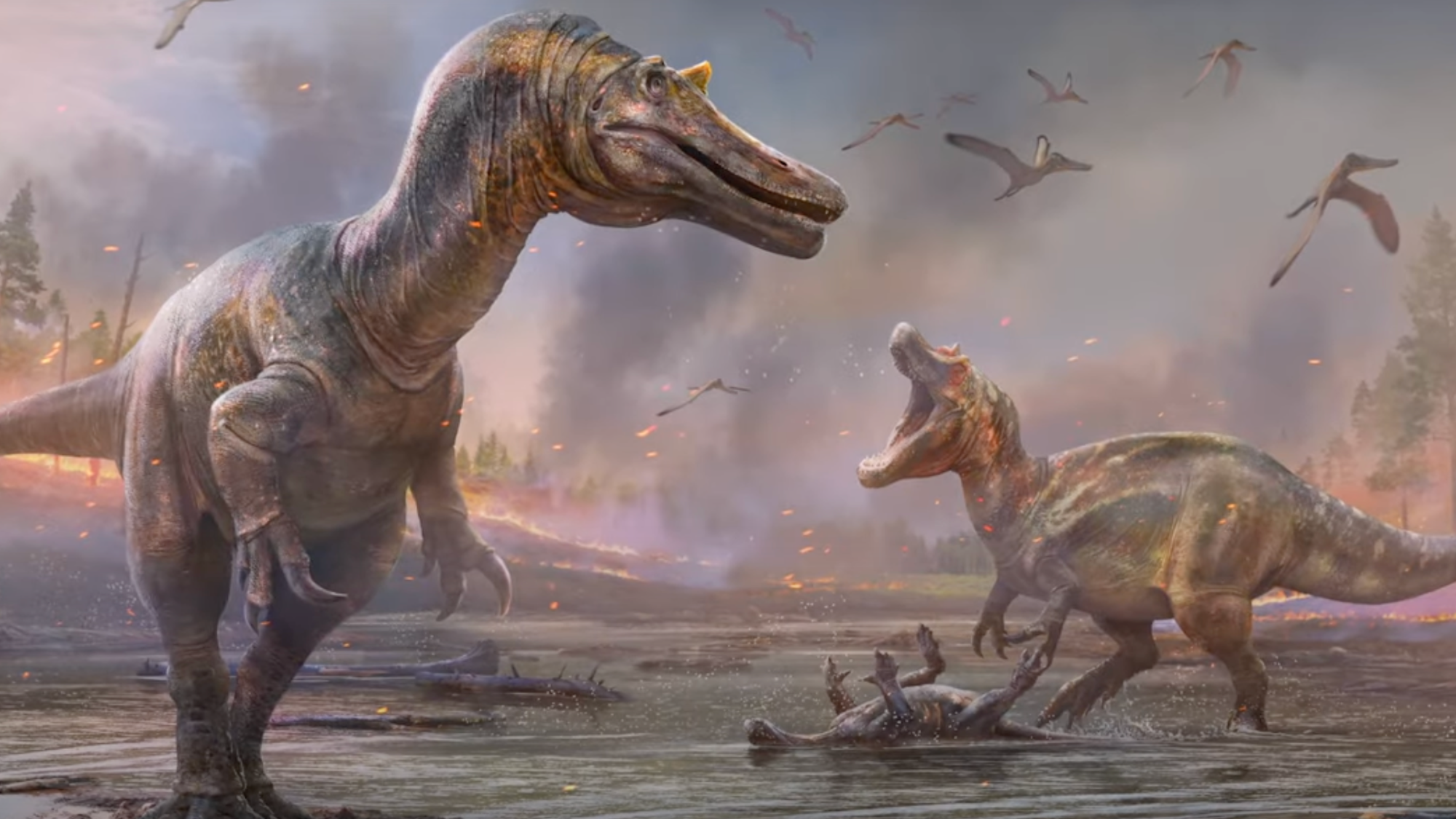

Roughly 125 million years ago, when the world was warmer, more humid, with higher sea levels, Spinosaurs were a genus of theropod (or “beast-footed”) dinosaurs. These unusual 13 to 22 ton dinos were known for their long, crocodile-like jaws and cone shaped teeth. They stalked riverbanks preying on large fish and lived a different lifestyle than more familiar theropods, such as Allosaurus and Tyrannosaurus. Some spinosaur species include Spinosaurus aegyptiacus and Spinosaurus marocannus and many specimens have been found in northern Africa.
But, paleontologists still don’t know quite as much about these “enormous river monsters.”
An international team of scientists has reconstructed the brains and inner ears of two spinosaur specimens found in England. Not only does reconstructing a dino brain sound awesome, it’s also a step in understanding how these theropod dinosaurs interacted with their environment. The study was published February 13 in the Journal of Anatomy.
[Related: Cushy feet supported sauropods’ gigantic bodies.]
In order to get a better understanding of how their brains and senses evolved, the team scanned fossils of two different theropod species—Baryonyx found in Surrey, in southern England and Ceratosuchops, which was found on the Isle of Wight. Baryonyx was about 32 feet long and bore the same crocodile-like mouth. Ceratosuchops has been nicknamed the “hell heron,” and was about 27 feet long.
These specimens are special because they are two of the oldest spinosaur fossils that contain the dinosaur’s braincase material. The team was able to digitally reconstruct the internal soft brain tissues that rotted away over time.

They found that the olfactory bulbs—responsible for processing smells—weren’t particularly developed. However, their ears were likely attuned to picking up low frequency sounds. They also found that the parts of the brain that keep the head stable and eyes fixed on prey were possibly less developed than they were in more specialized spinosaurs that evolved later on.
“Despite their unusual ecology, it seems the brains and senses of these early spinosaurs retained many aspects in common with other large-bodied theropods – there is no evidence that their semi-aquatic lifestyles are reflected in the way their brains are organized,” said Chris Barker, a PhD student at the University of Southampton and co-author, in a statement.
One of the team’s interpretations of this evidence is that the ancestors of spinosaurs already had sensory adaptations and brains that were suited to catching fish. To become more adept at living in a specialized semi-aquatic lifestyle, they needed to evolve an unusual snout and teeth.
[Related: Spinosaurus bones hint that the spiny dinosaurs enjoyed water sports.]
“Because the skulls of all spinosaurs are so specialized for fish-catching, it’s surprising to see such ‘non-specialised’ brains,” said University of Southampton paleontologist and co-author Darren Naish, in a statement. “But the results are still significant. It’s exciting to get so much information on sensory abilities – on hearing, sense of smell, balance and so on – from British dinosaurs. Using cutting-edge technology, we basically obtained all the brain-related information we possibly could from these fossils.”
One of the most powerful CT scanners in Great Britain scanned the braincase of the Cretaceous era-Ceratosuchops, and a model of its brain will be on display alongside of its bones at Dinosaur Isle Museum on the Isle of Wight.
“This new research is just the latest in what amounts to a revolution in paleontology due to advances in CT-based imaging of fossils,” said co-author Lawrence M. Witmer, professor of anatomy at the Ohio University Heritage College of Osteopathic Medicine, in a statement. “We’re now in a position to be able to assess the cognitive and sensory capabilities of extinct animals and explore how the brain evolved in behaviorally extreme dinosaurs like spinosaurs.”
